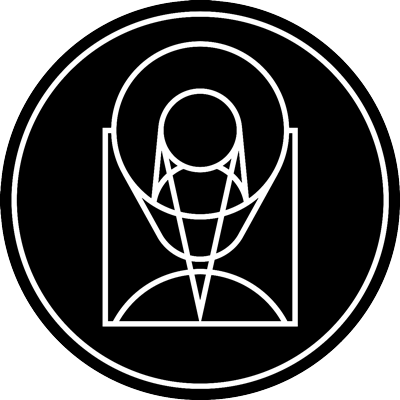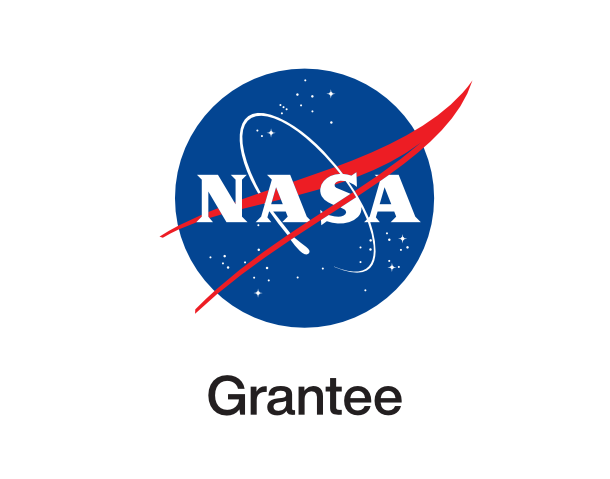- Image Type
- Subject
- Spectral Band
- Locale
- Image Channels
- Image Coordinates
- Telescope Facility
- Publisher
Scroll to load additional results for large searches. Thumbnails may rearrange to maintain sort order until page is fully populated.
Cat’s Paw Nebula
![]()
![]()
NGC 6334, The Cat’s Paw Nebula
This image of emission nebula NGC6334 (the Cat’s Paw Nebula), a star-forming region in the constellation Scorpius, was taken in 2007 using the Mosaic-2 imager on the Blanco 4-meter telescope at Cerro Tololo Inter-American Observatory. The colors of the nebula are reddened by intervening dust in...
Cat's Paw Nebula
![]()
![]()
![]()
Cat's Paw (NIRCam Image)
To celebrate NASA’s James Webb Space Telescope’s third year of highly productive science, astronomers used the telescope to scratch beyond the surface of the Cat’s Paw Nebula (NGC 6334), a massive, local star-forming region. This area is of great interest to scientists, having been subject to...
Cat's Paw Nebula
![]()
![]()
The Cat’s Paw Nebula as seen by CONCERTO
This image of the star-forming region NGC 6334, also known as the Cat’s Paw Nebula, is one of the first-light images taken by the CONCERTO instrument on the APEX telescope, operated by ESO. The total integration time is 16 minutes. CONCERTO is able to scan the sky at frequencies between...
Cat's Paw Nebula
![]()
![]()
CONCERTO show starts with new view of the Cat’s Paw Nebula
This image of the star-forming region NGC 6334, also known as the Cat’s Paw Nebula, is one of the first-light images taken by the CONCERTO instrument on the APEX telescope, operated by ESO. The new observations, shown in white and pink tones, have been superimposed to an image of the same...
Cat's Paw Nebula
![]()
Highlights from VISTA’s infrared view of the Cat’s Paw Nebula
Highlights from the infrared view of the Cat’s Paw Nebula (NGC 6334) taken by VISTA. NGC 6334 is a vast region of star formation about 5500 light-years from Earth in the constellation of Scorpius. The whole gas cloud is about 50 light-years across. NGC 6334 is one of the most active nurseries...
Cat's Paw Nebula
![]()
![]()
Around the Cat's Paw Nebula
Wide view centred on the Cat’s Paw Nebula (NGC 6334).
Cat's Paw Nebula
![]()
![]()
The Cat's Paw Nebula*
The Cat’s Paw Nebula (NGC 6334) is a vast region of star formation. This new portrait of NGC 6334 was created from images taken with the Wide Field Imager instrument at the 2.2-metre MPG/ESO telescope at the La Silla Observatory in Chile, combining images taken through blue, green and red...
Cat's Paw Nebula
![]()
An infrared/visible comparison view of the Cat’s Paw Nebula
This image compares infrared and visible views of the Cat’s Paw Nebula. The visible light image (right) was taken with the Wide Field Imager on the 2.2-metre MPG/ESO telescope at La Silla in Chile (eso1003). The new infrared image (left) was taken with the VISTA telescope at ESO’s Paranal...
Cat's Paw Nebula
![]()
![]()
VISTA’s infrared view of the Cat’s Paw Nebula*
Infrared view of the Cat’s Paw Nebula (NGC 6334) taken by VISTA. NGC 6334 is a vast region of star formation about 5500 light-years from Earth in the constellation of Scorpius. The whole gas cloud is about 50 light-years across. NGC 6334 is one of the most active nurseries of young massive...
Cat's Paw Nebula
![]()
The NGC 6357 and NGC 6334 nebulae
Colour-composite image of the nebulae NGC 6357 (left) and NGC 6334 (right) as seen by the ATLASGAL survey. NGC 6357 is a diffuse nebula containing the open cluster Pismis 24, home to several very massive stars. NGC 6334 is an emission nebula also known as the “Cat’s Paw Nebula”. In this image,...
Milky Way
![]()
View of the Galactic Plane from the ATLASGAL survey
Colour-composite image of part of the Galactic Plane seen by the ATLASGAL survey. In this image, the ATLASGAL submillimetre-wavelength data are shown in red, overlaid on a view of the region in infrared light, from the Midcourse Space Experiment (MSX) in green and blue. The total size of the...
Atacama Pathfinder Experiment
![]()
View of the Galactic Plane from the ATLASGAL survey (in five sections)
Colour-composite image of part of the Galactic Plane seen by the ATLASGAL survey, divided into sections. In this image, the ATLASGAL submillimetre-wavelength data are shown in red, overlaid on a view of the region in infrared light, from the Midcourse Space Experiment (MSX) in green and blue....
Atacama Pathfinder Experiment
![]()
View of the Galactic Plane from the ATLASGAL survey (annotated)
Colour-composite annotated image of part of the Galactic Plane seen by the ATLASGAL survey. In this image, the ATLASGAL submillimetre-wavelength data are shown in red, overlaid on a view of the region in infrared light, from the Midcourse Space Experiment (MSX) in green and blue. The total size...
Atacama Pathfinder Experiment
![]()
View of the Galactic Plane from the ATLASGAL survey (annotated and in five sections)
Colour-composite annotated image of part of the Galactic Plane seen by the ATLASGAL survey, divided into sections. In this image, the ATLASGAL submillimetre-wavelength data are shown in red, overlaid on a view of the region in infrared light, from the Midcourse Space Experiment (MSX) in green...
Cat's Paw Nebula
![]()
Cat's Paw print in the Scorpius constellation
The distinctive-looking Cat's Paw Nebula, also known as the Bear Claw Nebula and cataloged as NGC 6334, is located in the constellation Scorpius. ESO's 3.6-meter Telescope at the La Silla observatory in Chile gathered the light for this image in 1986.
Cat's Paw Nebula
![]()
![]()
The star-forming Cat’s Paw Nebula through ArTeMiS’s eyes
This image of the star formation region NGC 6334 is one of the first scientific images from the ArTeMiS instrument on APEX. The picture shows the glow detected at a wavelength of 0.35 millimetres coming from dense clouds of interstellar dust grains. The new observations from ArTeMiS show up in...
Gliese 667
![]()
![]()
The sky around the star Gliese 667C
This picture shows the sky around multiple star Gliese 667. The bright star at the centre is Gliese 667 A and B, the two main components of the system, which cannot be separated in this image. Gliese 667C, the third component, is visible as a bright star, very close and just under A and B,...
Cat's Paw Nebula
![]()
![]()
Protostar blazes and reshapes its stellar nursery
This image, taken by the Atacama Large Millimeter/submillimeter Array (ALMA) in Chile, shows glowing dust inside the protocluster NGC 6334I. Studying this star-forming cloud in the Cat’s Paw Nebula (NGC 6334) with both ALMA and the Submillimeter Array (SMA) in Hawaii astronomers could see that...
Cat's Paw Nebula
![]()
![]()
The Cat's Paw remastered
The Cat’s Paw Nebula is revisited in a combination of exposures from the MPG/ESO 2.2-metre telescope and expert amateur astronomers Robert Gendler and Ryan M. Hannahoe. The distinctive shape of the nebula is revealed in reddish puffy clouds of glowing gas against a dark sky dotted with stars....
Cat's Paw Nebula
![]()
![]()
![]()
The Cat's Paw Nebula MIPS & IRAC
The Cat's Paw Nebula, imaged here by NASA's Spitzer Space Telescope using the MIPS and IRAC instruments, is a star-forming region that lies inside the Milky Way Galaxy. New stars may heat up the surrounding gas, which can expand to form "bubbles."
Cat's Paw Nebula
![]()
![]()
![]()
The Cat's Paw Nebula IRAC
The Cat's Paw Nebula, imaged here by NASA's Spitzer Space Telescope using the IRAC instrument, is a star-forming region inside the Milky Way Galaxy. The dark filament running through the middle of the nebula is a particularly dense region of gas and dust.
NGC 6334I
![]()
![]()
![]()
Heavy Water in NGC 6334I
Composite ALMA image of NGC 6334I, a star-forming region in the Cat\'s Paw Nebula, taken with the Band 10 receivers, ALMA\'s highest-frequency vision. The blue component is heavy water (HDO) streaming away from either a single protostar or a small cluster of protostars. The orange region is the...
Spectral Lines in the Cat\'s Paw Nebula
Spectral Lines in the Cat's Paw Nebula
The upper blue portion of this graph shows the spectral lines ALMA detected in a star-forming region of the Cat\'s Paw Nebula. The lower black portion shows the lines detected by the European Space Agency\'s Herschel Space Observatory. The ALMA observations detected more than ten times as many...




























